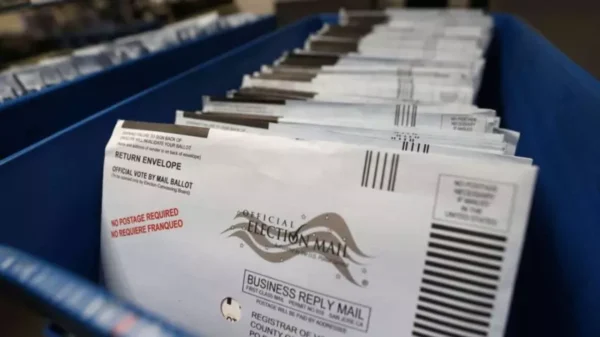Despite Supreme Court Ruling, Voting Is Still Not a ‘Use It or Lose It’ Right


The U.S. Supreme Court ruled on Monday that an Ohio voter purge program can resume, finding that the practice does not violate the National Voter Registration Act of 1993. The decision is a setback for voting rights in America and devastating for the thousands of Ohio voters who will show up at the polls only to learn that they have been purged and barred from casting a ballot — which happened to our client Larry Harmon in 2015.
The ruling, however, is not a green light for states to initiate wholesale purges of registered voters however they see fit. While the court concluded that Ohio’s practice was permitted under the NVRA, it was unmistakably clear that states cannot purge registered voters without first providing notice and an opportunity to stay on the rolls.
Along with our partners, the ACLU challenged Ohio’s voter purge process, which targets registered voters who do not vote in a two-year period for removal from the rolls. Here’s what the process looks like: Ohioans who don’t vote for two years are sent a nondescript postcard from the Ohio secretary of state’s office requesting a confirmation of their address. If those voters don’t respond to the notice or vote within the next two federal election cycles (or four years), they are kicked off the rolls without further notice.
For decades, the Department of Justice, which enforces the NVRA, in both Republican and Democratic administrations, maintained that these kinds of purges are illegal — including in the run up to the 2016 election in this very case. Under Trump, however, the Justice Department flipped sides. It’s a stark reminder of the administration yet again reversing course on civil rights.
As Justice Sotomayor pointed out in her dissent, the NVRA’s restrictions on voter purge practices were created “against the backdrop of substantial efforts by States to disenfranchise low-income and minority voters,” including purges based on registrant’s failure to vote. As a result, the NVRA expressly prohibits purging voters just because they don’t vote. The court, however, concluded that Ohio’s practice of targeting infrequent voters for removal does not violate the NVRA — even though hundreds of thousands of Ohio voters, disproportionately minority, low-income, disabled, and veterans — were disenfranchised since this practice began.
Nevertheless, although the court permitted Ohio’s purge program, it did so because the targeted voters are removed only after they receive a notice and subsequently do not vote or respond to the notice for another four years. As Justice Alito acknowledged, “the NVRA is clear about the need to send a ‘return card,’” before a state may remove a registered voter.
So while today’s decision “ultimately sanction[s] the very purging” of minority and low-income voters that Congress sought to prevent in enacting the NVRA, as noted by Justice Sotomayor, states do not have unfettered discretion to purge voters. States should beware of trying to turn the clock back on voting rights by failing to heed the NVRA’s limits on purge practices.
As Justice Sotomayor wrote in her dissent:
“Communities that are disproportionately affected by unnecessarily harsh registration laws should not tolerate efforts to marginalize their influence in the political process, nor should allies who recognize blatant unfairness stand idly by. Today’s decision forces these communities and their allies to be even more provocative and vigilant in holding their States accountable and working to dismantle the obstacles they face in exercising the fundamental right to vote.”
We agree, and we will continue to monitor states to protect our voting rights this fall and beyond. In fact, we, along with a number of other voting rights advocates, recently secured one preliminary victory against an illegal voter purge program.
Once registered, a voter should not be disenfranchised so long as the voter remains eligible to vote. That basic principle is one that should be jealously guarded in our democracy regardless of one’s political persuasion.
Stay informed
Sign up to be the first to hear about how to take action.
By completing this form, I agree to receive occasional emails per the terms of the ACLU's privacy statement.
By completing this form, I agree to receive occasional emails per the terms of the ACLU's privacy statement.

